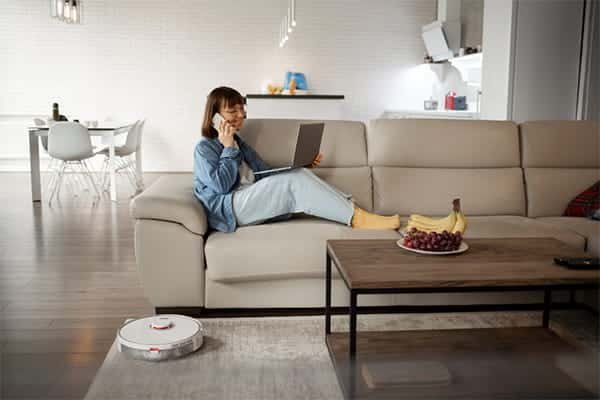With the advancement of Artificial Intelligence and other smart technologies, homes have transformed into networks of connected devices designed to make life more efficient and convenient. From voice-activated assistants to remotely controlled security devices, smart home systems promise a future where comfort and control are within reach.
However, as these intelligent systems integrate into daily life, they also bring several challenges and issues. Below are common smart home technology issues and Effective Solutions
Common Smart Home Technology Issues
Compatibility Challenges
Many homeowners encounter compatibility issues when attempting to connect various devices.
Cause
Compatibility challenges in smart home systems can arise from various factors. With multiple devices and communication protocols in play, smart home devices often operate on protocols like Zigbee, Z-Wave, WiFi, Bluetooth, and Matter. Devices using separate communication protocols may not interact well, causing compatibility issues.
Additionally, vendor-specific standards can lead to incompatibility. With numerous manufacturers and providers on the market, some even develop proprietary standards only compatible with their devices. Devices from other providers must meet unique compatibility requirements.

Solution
When facing compatibility challenges, follow these steps: Before purchasing a smart home device, research its compatibility with your existing devices and platform. Manufacturers typically list compatible devices on their websites. Opting for devices from the same manufacturer or ecosystem may also increase seamless integration.
If you have trouble selecting devices, consider using a central hub or controller. This allows you to connect various devices and bridge gaps between those using different protocols. If a device stops communicating, try resetting and re-pairing it following the manufacturer’s instructions.
Internet Connectivity Issues
Homeowners sometimes experience connectivity issues, such as security cameras constantly losing feed or smart lights malfunctioning.
Cause
Internet connectivity problems in smart home systems are often related to WiFi issues. Various sources can disrupt WiFi communication between devices. Interference from other devices, particularly those using the same WiFi frequency (2.4GHz or 5GHz), can degrade the signal. Examples of interfering devices include microwaves, ovens, cordless phones, and Bluetooth devices.
Signal strength can also weaken if a device is too far from the WiFi router or access point. Physical barriers like walls, floors, and large furniture can obstruct or weaken WiFi signals. Router placement, especially in a corner or behind objects, can limit WiFi range.

Solution
To resolve WiFi connection issues, start by adjusting the router’s location. Position it centrally to ensure that the signal reaches all devices. Raising the router to a certain height may also improve connectivity.
If your router is outdated, consider investing in a new, high-quality model with a wider range and the latest WiFi standards, such as WiFi 6. Once you’ve optimized your WiFi setup, choose less congested channels for minimal interference, such as the 5GHz band if supported by your devices.
===> Learn more: Causes and Solutions for Smart Home System Errors
Power Drain Issues
Power drain issues in smart home systems can also cause device malfunctions and communication errors.
Cause
High-power devices like security cameras, gaming consoles, and other energy-consuming devices can drain power quickly. Plugging multiple devices into the same power source or overloading circuits can lead to early power drain and outages.
For battery-powered smart devices, degraded or old batteries may struggle to hold a charge. Continuous or excessive use of battery-powered devices may also lead to rapid battery depletion. Devices plugged into outlets with unstable voltage may also drain power faster.
Solution
Optimize your smart devices’ settings to address power drain issues. For instance, adjust screen brightness, notifications, and background processes to reduce energy consumption. You can also schedule devices or set automation routines to manage their activity and standby modes.
Replace old or faulty batteries with new ones in battery-powered devices, and monitor battery levels regularly. For plug-in devices, consider using an uninterruptible power supply (UPS) to protect against power fluctuations and outages. Distribute high-power devices across multiple outlets to avoid overloading a single socket or circuit.
Automation Errors and Frequent Malfunctions
Automation errors and frequent malfunctions can disrupt the expected operation of smart devices, affecting the efficiency of the entire setup.
Cause
Automation errors and frequent malfunctions in smart home technology can stem from several factors. Network outages, interference, or congestion can disrupt the smooth execution of automated processes and routines.
Improperly configured devices or incorrect settings may prevent automation triggers from working as expected. Devices need to be accurately synchronized in time to avoid untimely automation actions.
Cloud-dependent devices can encounter errors if cloud services experience downtime or synchronization delays. Smart devices come with various embedded software systems, and software bugs in smart home hubs, controllers, or individual devices can lead to unexpected behavior and frequent malfunctions.

Solution
To avoid issues with smart home devices, start by keeping devices, hubs, and controllers updated with the latest firmware and software. Regularly check manufacturer updates and monitor your routines and automation processes to detect and address errors promptly.
Avoid overly complex automation involving multiple devices to reduce the risk of failure. If you use multiple motion-activated devices like security cameras or sensors, employ redundant triggers for automation to increase reliability. For example, combine window and door sensors in different locations to diversify the triggers.
Issues with Voice Assistants
As essential components of smart home systems, voice assistants enable users to control various devices through verbal commands. However, they may occasionally encounter different problems.
Cause
Voice assistants may struggle to accurately understand commands in the presence of background noise, as noise can interfere with distinguishing user speech. Users with non-standard accents or dialects may also experience difficulty, as voice assistants are typically trained on standard accents and dialects. Variations in speech patterns, tone, or context can further confuse voice assistants.
If you provide unclear commands, the voice assistant may require clarification. For example, “turn off the lights” may need clarification on which light. Voice assistants have vocabulary limitations and may struggle to understand specialized terminology, technical terms, or new slang.
Solution
Resolving voice assistant issues requires efforts from both developers and users. Developers should continually improve the accuracy, understanding, and user experience of voice assistants through updates, advanced training data, and natural language processing advancements.
Manufacturers must provide clear documentation, guidance, and onboarding experiences to help users make the most of voice assistant features. Users should carefully follow instructions and promptly report issues as they arise.
Frequently Asked Questions about Smart Home Technology Issues
Are smart home systems vulnerable to cyberattacks?
Yes, smart home systems can be vulnerable to cyberattacks due to weak authentication, unpatched vulnerabilities, insecure communication, third-party integration, and user behavior like using default passwords. These vulnerabilities can lead to unauthorized access, data breaches, device manipulation, and even remote control by malicious actors.

Can I resolve smart home issues myself?
Many smart home issues can be self-resolved. Basic troubleshooting steps, such as restarting devices, updating software, and configuring network connections, can often address common problems. However, more complex issues involving integration, security, or hardware faults may require technical expertise.
Smart home systems offer convenience and comfort, but they may occasionally encounter issues that frustrate users. Since the causes of problems can vary depending on specific cases, users should take appropriate steps. Contact NT Security for consultation and repair if your smart home system encounters issues.

